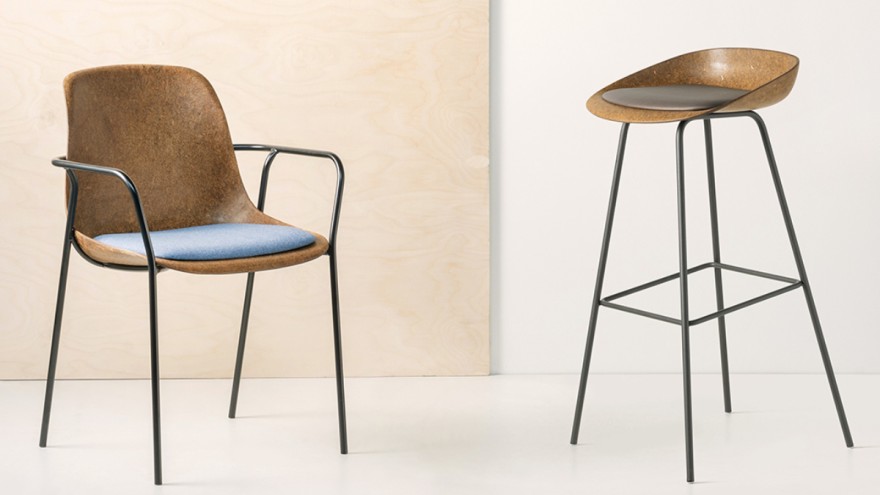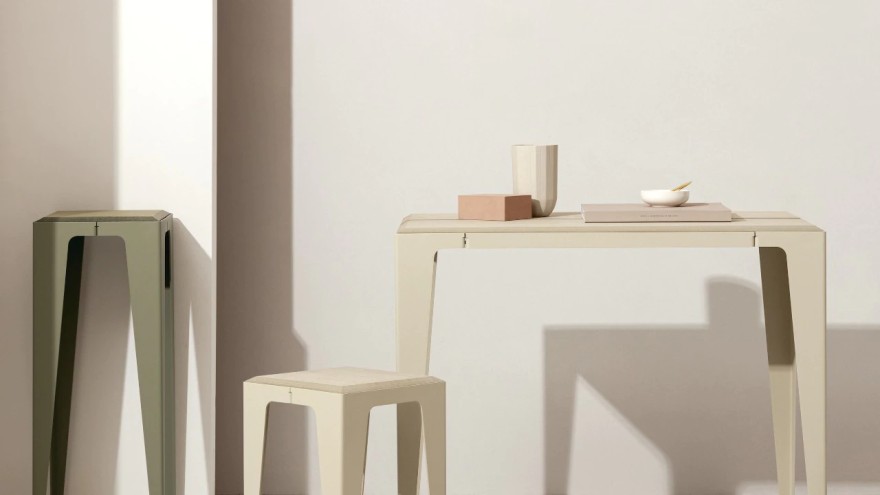Disposing of furniture is becoming more and more sustainable
Furniture recycling: What are the challenges?
Strictly speaking, compostable products are nothing new. Before industrial machinery and modern materials came into use, furniture was handmade from natural materials. Today sustainable disposal is challenging for several reasons: Many items of furniture consist of several materials – often glued together – which are difficult to separate during the recycling process. What’s more, materials such as plastic, metal, aluminium and adhesives are not biodegradable.
And finally, many industrially produced items of furniture have only a short lifespan: Fast furniture is the buzzword here. Every year, tonnes of waste are produced and not fed back into the material cycle. To solve this problem, growing numbers of companies are developing sustainable furniture . The latest trend: furniture made from compostable materials.

Furniture produced from compostable materials, like this bed by ROOM IN A BOX, is sustainable – and can be an eye-catching feature. (Photo: ROOM IN A BOX)
Natural and biodegradable materials
Compostable furniture consists of biodegradable materials that can be handled in a composting facility, like other biowaste. Microorganisms break the organic substances down with the aid of oxygen. The end product is potting soil and similar substrates. In this way, compostable products end up in areas of greenery or in flowerpots for house plants at the end of their life cycle.
But which raw materials can be used for this kind of furniture production? There’s a whole range of them:
Hemp is currently experiencing a renaissance as a rapidly regrowing, renewable raw material . Textiles and construction materials can be produced from its fibres. Among the numerous examples are the designer rug Tres Vegetal by Nani Marquina and the seat shells in the Hemp Fine chair collection by Vepa .
The coordinating sofa can be covered with mushroom or cactus leather. Mushroom leather is made from Fomes fomentarius, a parasitic tree fungus otherwise known as tinder fungus, while cactus leather is produced from nopal cactuses from Mexico.
Although paperboard isn’t a natural material, it breaks down into compost within a year. Not only that: From cupboards to beds, it opens up tremendous creative freedom, as the furniture start-up ROOM IN A BOX demonstrates.

Furniture produced from compostable materials, like this bed by ROOM IN A BOX, is sustainable – and can be an eye-catching feature. (Photo: ROOM IN A BOX)
Natural wood is making a comeback as a mono-material
Wood may not regrow as quickly as bamboo, but the natural material is becoming increasingly popular. And for good reason. Producing wooden furniture is a way to save resources – as long as it is regional wood from sustainable forests, such as that used in Thonet’s Pure Materials collection . Short transport routes and gentle processing mean that comparatively few emissions are released. Natural linseed or tung oil and natural lacquers or varnishes are ideal for treating and finishing the wood. What’s more, high-quality wooden furniture has a long lifespan.
And what happens when it reaches the end of its useful life? Disposing of furniture made entirely from wood isn’t difficult because it consists of just one material – it is a mono-material product, to use the technical term. The Dreiblatt stool by Spurenlos , for instance, is completely biodegradable because it doesn’t contain any metal or synthetic materials. The LHEA designer chairs by Spall i also dispense with screws entirely. Only the seat cushion needs to be removed before disposal.
Disposing of furniture and reusing it sustainably
Wood waste products such as sawdust and waste wood can be processed into chipboard. The furniture industry is the biggest purchaser of this material. At first glance, turning old furniture into new items seems entirely in line with the principles of the circular economy . However, chipboard isn’t biodegradable, and it is difficult to recycle. It contains composite materials and is often coated with PVC and wood preservatives, such as formaldehyde. Treated chipboard is therefore classified as hazardous special waste.
But there is another way: For instance, there is Neolign® by WYE The furniture start-up has developed this innovative material made from sawdust and polymers and free from harmful substances. The mouldable material can be used to produce a wide range of furniture, including the chamfer desk . At the end of their life cycle, the items are fed back into furniture production as pellets.

Innovation meets sustainability in the recycled furniture from the chamfer collection by WYE. (Photo: WYE)
Compostable materials are the future
From biodegradable materials such as mushroom leather and paperboard to wooden furniture with plug-in connections all the way through to innovative materials made from sawdust – more and more designers have set out to develop compostable products for the interior design industry. After all, we will still need to get rid of furniture in the future – but it will have to be intelligently reused or broken down into soil to protect the environment.
Alternatives such as hemp fibres or handmade wooden furniture haven’t yet reached the mainstream because their production is comparatively expensive. But the growing demand for green interior design and the challenges facing the industry leave no room for doubt: Fast furniture isn’t the future – long-lasting interior design made from compostable materials is.
Are you interested in sustainable interior trends? Then check out our special edition of TRENDimmPACT on sustainability – and subscribe to the magazine by imm cologne newsletter !




